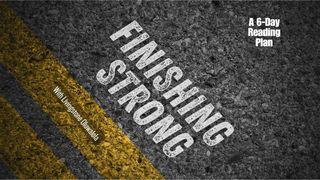Sunday Head, Monday FeetSample

The Absurd Architecture of Failure
There's something deeply disturbing about the statue Nebuchadnezzar sees in his dream.
It's not just the imposing size. It's not just the terrifying appearance. It's something much more subtle and much more unsettling: it's the total absurdity of the architectural design.
Daniel describes the statue with almost obsessive precision: "The head of this image was of fine gold, its chest and arms of silver, its belly and thighs of bronze, its legs of iron, its feet partly of iron and partly of clay."
Read this description with the eyes of a structural engineer. With the mind of someone who understands material physics. With the experience of anyone who has ever built something that needed to stay standing.
You'll get dizzy.
Because what God is showing Nebuchadnezzar—and through him, you—is the craziest blueprint ever conceived in the history of human architecture.
The Impossible Project
Imagine walking into an architect's office and seeing blueprints for a 50-story skyscraper on his desk. You look at the drawings and realize he's designed the first 30 floors with the strongest reinforced concrete in the world. The next 15 floors are with industrial-grade steel. But the last 5 floors—the ones that have to support all the weight above—he's designed with drywall and plywood.
You'd think he was insane.
Yet this is exactly the model we unconsciously follow for our spiritual lives.
We put the purest gold—our best energies, our most precious resources, our most focused attention—in the head: in thoughts, understanding, theological insights, moments of inspiration.
We dedicate silver—still precious, but less than the head—to the chest: to spiritual emotions, religious feelings, worship experiences.
We invest bronze—sturdy but less noble—in the belly: in spiritual instincts, religious practices, devotional habits.
But when we get to the feet—the part that must support everything else, the part that touches ground, the part that walks through daily life—suddenly we become cheap. Suddenly, we think iron mixed with clay is sufficient.
Why does God show us such an absurd design?
Divine Pedagogy of the Impossible
It's not a divine communication error. It's not a failed metaphor. It's not narrative coincidence.
God is deliberately showing you an architectural blueprint that violates every law of physics and logic to reveal something crucial about how human beings construct their existence.
It's as if God is saying: "Look carefully at this absurdity. Observe how ridiculous this design is. Feel how unstable this structure is. Now tell me: doesn't this remind you of something? Don't you recognize in this architectural madness the way you've built your spiritual life?"
Because the uncomfortable truth is that all of us—without exception—tend to build with the upside-down architecture of Nebuchadnezzar's statue.
We tend to put maximum effort where there's minimum structural load (in intellectual understanding) and minimum effort where there's maximum daily stress (in practical application).
We tend to invest gold in peak moments and clay in valley moments.
We tend to be giants in theory and dwarfs in practice.
The Intentional Reversal
But there's something even deeper in this absurd image that God presents to Nebuchadnezzar.
The statue's architecture isn't just wrong from an engineering standpoint. It's intentionally reversed from every logic of wise construction.
Every human system—political, economic, social, religious—tends to follow exactly this pattern: privilege appearance over substance, invest in command structures while neglecting foundations, concentrate resources in visible parts while ignoring load-bearing parts.
Look at the kingdoms that the statue represents in Daniel's prophetic vision. Babylon with its golden head—all the splendor concentrated in royal magnificence, while the people labored at the base. Medo-Persia with its silver chest—wealth in the elites, while the empire's foundations remained fragile. Greece with its bronze belly—Alexander's intellectual brilliance while political unity crumbled. Rome with its iron legs—imposing military strength built on feet mixed with iron and clay that ultimately couldn't hold.
Every human system collapses at the exact same point: at the foundations. Not from lack of splendor above, but from fragility below.
And God, in his infinite pedagogical wisdom, shows you this impossible image so you can recognize—and correct—the same error in your personal life.
The Ruthless Diagnosis
Nebuchadnezzar's statue is the most accurate X-ray ever taken of contemporary spirituality.
We are a generation of Christians with golden heads and clay feet. With refined theologies and fragile obedience. With deep understanding and shallow application.
We know everything about grace, but collapse at the first family conflict.
We've studied everything about forgiveness, but can't get past resentment toward our coworker.
We preach Christ's peace, but live in constant anxiety about the future.
We talk about God's love, but ruthlessly judge those who aren't like us.
Gold in understanding, clay in application.
Precious metal in moments of inspiration, fragile earth in moments of pressure.
Solidity in controlled situations, fragmentation in unexpected situations.
The Revelation of Contrast
But here's the most devastating and most liberating thing about this image: God isn't showing you the statue to humiliate you. He's showing it to you to contrast it.
Because immediately after describing this absurd architecture, Daniel sees the stone. A stone that isn't artificially assembled with different materials. A stone that has the same substance from base to top. A stone that doesn't collapse because it was never built with the upside-down logic of human statues.
The stone grows. It's not stacked.
The stone expands. It's not assembled.
The stone has material consistency. It doesn't have stratifications of different value.
And this stone—this divine alternative to absurd human architecture—becomes a mountain that fills the whole earth.
God is telling you: "Look closely at this impossible statue. Recognize the madness of this design. Admit that this is how you've built your spiritual life. And then let me show you a completely different architecture."
The Invitation to Structural Honesty
Today, as you contemplate the architectural absurdity of Nebuchadnezzar's statue, there's an invitation that resonates from the depths of divine mercy:
Have the courage to admit that you too have followed this impossible blueprint.
Have the honesty to recognize that you too have put gold where iron was needed and clay where gold was needed.
Have the transparency to confess that you too have invested in the parts that show and neglected the parts that support.
Have the sincerity to say: "Yes, I too have Sunday head and Monday feet. I too have followed the absurd architecture of the statue. I too need a completely different design."
Because only when you admit the absurdity of the blueprint you've followed so far can you be open to the alternative God wants to show you.
Only when you recognize the madness of reversed architecture can you be ready for the wisdom of divine architecture.
Only when you confess to building with statue logic can you desire to grow with stone nature.
The Question That Prepares Tomorrow
And as you close this day of recognition, as you accept having followed the most absurd architectural blueprint in history, there's a question that begins to form in the depths of your consciousness:
"If the statue's architecture is so obviously absurd, why do I keep following it? What drives me to repeat the same structural error over and over? Why can't I stop putting gold at the top and clay at the bottom?"
Tomorrow you'll discover the most shocking answer of all: just one small stone of the unexpected reveals where your foundations really are.
Tomorrow you'll understand why all human projects—even those that seem most solid—are destined to collapse at exactly the same point.
But today—today it's enough that you dwell in the admission. That you remain in the confession. That you abide in the honesty of having followed the craziest blueprint ever conceived.
Today it's enough that you say: "God, I recognize the absurdity of my spiritual architecture. I'm ready to discover your alternative."
And this admission—this confession that no human pride ever wants to make—is the beginning of the end of every construction destined to collapse.
It's the beginning of hunger for an architecture that doesn't collapse because it was never built with wrong materials in wrong places.
It's the beginning of desire for a stone that grows instead of crumbles.
About this Plan

A 10-day spiritual transformation journey exposing why your faith feels golden on Sunday but crumbles by Monday. Through Daniel's prophetic vision, discover the anatomy of spiritual fragmentation and learn to build lasting integrity. From diagnosing the "statue syndrome" to embracing divine proportionality, this plan reveals how to transfer gold from Sunday inspiration to Monday application, creating unshakeable spiritual foundations.
More
We would like to thank Giovanni Vitale for providing this plan. For more information, please visit: https://www.vitalegiovanni.com/
Related Plans

Healing the Soul From Emotional Ills

The Mission: Every Nation Prayer & Fasting

The Mission | the Unfolding Story of God's Redemptive Purpose (Family Devotional)

Refresh Your Soul - Whole Bible in 2 Years (2 of 8)

Light Has Come

God vs Goliath: The Battle Before the Battle

Advent

Making the Most of Your Marriage; a 7-Day Healing Journey

Refresh Your Soul - Whole Bible in 2 Years (1 of 8)
